| Botanical Name |
|
| Family |
Rutaceae - The rue, buchu & citrus family. |
| Pronunciation |
koh-lee-oh-NEE-muh pul-KEL-um |
| Common Name(s) |
|
| Plant Group |
- Fynbos Certain plants endemic to the areas of the Western Cape of South Africa that have a Mediterranean climate of cold, wet winters and hot, dry summers.
- Shrub A woody plant of relatively low height, having several stems arising from the base and lacking a single trunk; a bush.
|
| Plant Size |
- Small to Medium
| Tree | 8m to 15m |
| Shrub | 75cm to 1m |
| Perennial/ground cover | 20cm to 40cm |
| Bulb | 30cm to 40cm |
| Succulent | 20cm to 40cm |
|
| Position |
- Sun The area is in full sun for all or most of the day, all year round.
|
| General Information |
- Drought Tolerance: High The plant is well adapted to arid conditions; it can survive long periods of drought and high temperatures without extra water.
- Evergreen Plants that have leaves all year round.
- Fragrant / Aromatic These plants posses a strong, usually pleasant odour.
- Frost: Half-hardy The plant is able to survive low temperatures and some frost but requires protection against severe frost.
- Roots Non-invasive Safe to plant near pools, paving, walls or buildings.
- Salt spray tolerant A plant with specific adaptations enabling it to grow in a saline environment.
- Sand tolerant Plants adapted to survive in nutrient poor, very sandy soils.
- Water Wise Plant species originating from low rainfall regions that require less water to survive and thrive than other plant species.
- Wind Tolerant Plants able to withstand the effect of strong winds.
|
| Specific Information |
Coleonema pulchellum is an upright, reasonably dense shrub with a single stem from which many slender branches grow. The foliage is fine with needle-shaped leaves which have an aromatic fragrance when crushed. It grows successfully along the coast and fits in well with members of the protea family and other fynbos. If you have sufficient space, plant in groups of 3 or 5 leaving 75cm to 1 meter between the plants. The confetti bush will get woody after a few years and should then be replaced.
|
| Ad Break |
|
| Flowers |
| Description |
a profusion of very small flowers with five rounded petals
|
| Season |
- All Year Plants will seldom bloom for the entire season as given in the list, but should flower during a period within these parameters.
- Autumn to Spring Plants will seldom bloom for the entire season as given in the list, but should flower during a period within these parameters.
|
| Colour |
|
| Growth Rate |
- Moderate to Fast Specifying growth rate can be very misleading as there is considerable variation of growth rate depending on type and species of plant, available water, supplementary feeding, mulching and general care, as well as the plants suitability and adaptability to the garden environment.
|
| Plant Uses |
- Attracts bees, butterflies or other insects This plant attracts insects which can be food for birds or other creatures in your garden.
- Border A strip of ground, at the edge of a driveway or path in which ornamental plants or shrubs are planted.
- Container Trees, shrubs and ornamental species that can adapt to growing in a restricted environment.
- Cut Flowers Plants that provide flowers suitable for ornamental uses.
- Filler Either a fast growing tree or shrub used temporarily to fill in an area while the permanent plants grow to a desired size, or a plant used to fill gaps in borders or beds.
- Hedge Suitable trees or shrubs planted relatively close together so that the branches intertwine to create a barrier. This can be formal – the plants are regularly trimmed to produce a neat shape, or informal – the plants are left to themselves to create a natural hedgerow.
- Rock Garden An area constructed of larger rocks, arranged naturally, to emphasise the use of stones as a main element. Generally plants used do not need a lot of care.
- Suitable for coastal gardens Plants adapted to dry, sandy soil, forceful wind, limited rainfall and intense sunlight.
- Suitable for seaside gardens Plants that will survive the hostile environment of harsh salty winds, dry sandy soil, irregular rainfall and heat found in seaside gardens.
- Suitable for smaller gardens Such plants do not have invasive root systems, remain small or controllable and can often be grown in containers.
- Wild Garden An indigenous garden planted for the benefit of wildlife and birds. Provides food, water, a variety of mini-biomes and no poisonous chemicals are used.
- Windbreak Trees planted in a row to form protection from prevailing winds by breaking the force of the wind, thereby reducing wind damage.
|
| Distribution and Habitat |
Knysna to Port Elizabeth in the Eastern Cape Province, on coastal flats
|
| Planting Suggestions |
The confetti bush requires well-drained soil, compost and a well-balanced fertilizer (3:2:1). Mulch well to retain moisture and suppress weeds. Coleonema pulchellum is best planted out during winter and spring. Do not allow young plants to dry out and once established they will survive periods of drought. They respond to good watering in winter and moderate watering in summer.
|
| Medicinal Uses |
Fishermen are known to remove the odour of bait and fish from their hands by using the crushed leaves.
|
| Ad Break |
|


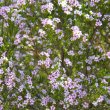
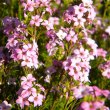
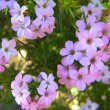
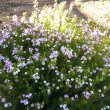
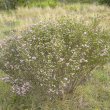



Comments
plants
we were just wondering if this plant called coleonema pulchellum rubrum is toxic to finches as I was planning to put it into an aviary.We live in Perthwill the bracken fern grow well with our hot summer??? Can you suggest any non toxic plants that the finches might like to breed in. Thank you for your help.
Coleonema pulchellum
Hi Duane
I am afraid I am unable to help you as regards toxicity of this plant to finches. I have come across no reference to the plant being toxic to any creatures. It is related to many other fynbos species that are used medicinally in South Africa. As to other plants you could use, I can only suggest that you search for finch breeders or birding clubs who will be able to give you valid and safe information.
I am just wondering what the
I am just wondering what the best time of year to plant this is. I live in California. Right now (1/5) it is about 60-70 during the day but can drop down into the 30's at night. We are having an unusually dry winter with occassional frost.
Coleonema pulchellum - when to plant
Hi Alisa
If you are planting a young plant, you can plant in spring after all danger of frost has passed. Ensure that the plant has full sun and good drainage as it doesn't like to "have its feet wet". If you are planting seeds or wish to make cuttings, go to http://www.plantzafrica.com/frames/plantsfram.htm for detailed information.
confetti bush
Hi I have a lovely pink shrub but it seems to be getting a bit 'thin' lately and not so many flowers - what is the best fertilizer for this shrub?
We live in Gautueng
Confetti bush
Hi Cynthia
The fertiliser to use is 3:2:1. Try for a slow release organic brand. You could also give it a layer of compost(don't dig it in) covered with a good mulch of milled pine bark (for the acidity it likes), about a meter all round the bush. This will provide nutrients over time. Coleonema originate from a winter rainfall area and require good watering in winter (I usually forgot to do this when I lived in Jhb) and moderate watering in summer. I also trim my bushes back a bit in autumn to encourage density and increased flowering.
Hope this helps.
Lorraine
Hi, I live in Trieste in
Hi, I live in Trieste in northern Italy near Venice. We occasionally have hard winters with a very strong and cold wind blowing. THis wind is really dangerous for all plants and confetti bush just dies with it. Otherwise, or if protected the plant is excellent and flourishing here too.
Coleonema pulchellum and icy wind
Hi Manuela
Thanks for your comment. It is so interesting to know how far and wide South African plants have spread. I googled to see where Trieste is and was wondering if your cold winds come from the Alps or from the east? The confetti bush grows naturally in a much warmer environment and I am surprised that it survives at all in such cold conditions, even if protected.
I am sure this information will be helpful for other readers who would like to grow this delightful shrub.
Kind regards
Lorraine
confetti bush
oh, I am so sorry I haven't answered you earlier but I didn't truly expect your answer, so I didn't look for it. The wind I am talking about blows here and on the Northern Croatian coast. It is called "bora" and comes from Russian prairies. At its peak it may reach 200 km per hour (that is expectional of course, but it does reach 100 km / hour often in winter. If not for this terrible wind, the climate here is not so bad in winter but in January and February temperature may go below 0 Celsius especially at night. I have 3 confetti bushes now, which are becoming common in Southern Italy but are still a rarity here. I was very glad to hear from you
Confetti bush in Northern Italy
Hi Manuela
I thought our winds were bad but they are no more than a breeze compared to yours! I would never have thought that Coleonema would survive in such an environment. This is valuable information for others who may want to grow this plant in less than ideal conditions. It is much tougher than I thought it was.
Many thanks for replying and for your interesting information.
Kind regards
Lorraine
Coleonema Pulchellum
Is this plant deer tolerant?
Do deer eat Coleonema Pulchellum?
Hi Will
Now you've got me. I have no idea. We don't have deer in South Africa so I have no experience of them. From what I have read though, they are quite a voracious lot that seem to eat almost anything. Most of our indigenous buck are grass eaters so there is no comparison there. The only way I can think of to find out is to experiment.
Sorry I can't be of any help. Perhaps another reader will be able to shed some light on this.
Regards
Lorraine
Do deer eat Coleonema P?
Hi Lorraine,
While deer taste preferences vary from region to region, in Northern California this is one of our most reliably deer-resistant plants. We live adjacent to a large park system and have a deer trail that runs through our back yard. The deer have never touched either c.p. 'compacta' or the full-size shrub. It is planted widely in our neighborhood.
Russ
Coleonema pulchellum: deer resistant in Northern California
Hi Russ
Many thanks for your comment. It is difficult to give advice where I have no experience of the problem. I am sure this will be good news for many other readers looking for deer-resistant plants. It seems that Coleonema are highly adaptable to many different climates and and uses.
Kind regards
Lorraine
confetti bush
I live in Jeffrey's Bay, i have just bought a confetti bush, Can i use acid compost when planting, the other thing i have a buchu plant i did not know they were related can i use acid compost with that as well.
Coleonema and buchu - acid loving
Hi Astrid
Yes to both plants. The soil I have is slightly alkaline and although the Confetti bushes grow and flower quite well, my Buchus hardly grew and never flowered until I bombarded them with tea leaves for a couple of seasons - thanks to a restaurant that collected their tea-bags for me! The results have been remarkable - quick growth and good flowering.
Changing ph of soil is a slow process, so spread the area round the plants with the acid compost a couple of times a year, or perhaps get friends to collect their tea bags - economical and effective.
Kind regards
Lorraine
Discuss this plant
Share knowledge, ask a question or give an experience.